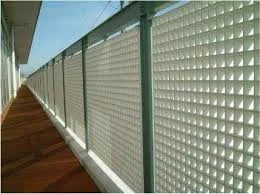
-
 Afrikaans
Afrikaans -
 Albanian
Albanian -
 Amharic
Amharic -
 Arabic
Arabic -
 Armenian
Armenian -
 Azerbaijani
Azerbaijani -
 Basque
Basque -
 Belarusian
Belarusian -
 Bengali
Bengali -
 Bosnian
Bosnian -
 Bulgarian
Bulgarian -
 Catalan
Catalan -
 Cebuano
Cebuano -
 China
China -
 China (Taiwan)
China (Taiwan) -
 Corsican
Corsican -
 Croatian
Croatian -
 Czech
Czech -
 Danish
Danish -
 Dutch
Dutch -
 English
English -
 Esperanto
Esperanto -
 Estonian
Estonian -
 Finnish
Finnish -
 French
French -
 Frisian
Frisian -
 Galician
Galician -
 Georgian
Georgian -
 German
German -
 Greek
Greek -
 Gujarati
Gujarati -
 Haitian Creole
Haitian Creole -
 hausa
hausa -
 hawaiian
hawaiian -
 Hebrew
Hebrew -
 Hindi
Hindi -
 Miao
Miao -
 Hungarian
Hungarian -
 Icelandic
Icelandic -
 igbo
igbo -
 Indonesian
Indonesian -
 irish
irish -
 Italian
Italian -
 Japanese
Japanese -
 Javanese
Javanese -
 Kannada
Kannada -
 kazakh
kazakh -
 Khmer
Khmer -
 Rwandese
Rwandese -
 Korean
Korean -
 Kurdish
Kurdish -
 Kyrgyz
Kyrgyz -
 Lao
Lao -
 Latin
Latin -
 Latvian
Latvian -
 Lithuanian
Lithuanian -
 Luxembourgish
Luxembourgish -
 Macedonian
Macedonian -
 Malgashi
Malgashi -
 Malay
Malay -
 Malayalam
Malayalam -
 Maltese
Maltese -
 Maori
Maori -
 Marathi
Marathi -
 Mongolian
Mongolian -
 Myanmar
Myanmar -
 Nepali
Nepali -
 Norwegian
Norwegian -
 Norwegian
Norwegian -
 Occitan
Occitan -
 Pashto
Pashto -
 Persian
Persian -
 Polish
Polish -
 Portuguese
Portuguese -
 Punjabi
Punjabi -
 Romanian
Romanian -
 Russian
Russian -
 Samoan
Samoan -
 Scottish Gaelic
Scottish Gaelic -
 Serbian
Serbian -
 Sesotho
Sesotho -
 Shona
Shona -
 Sindhi
Sindhi -
 Sinhala
Sinhala -
 Slovak
Slovak -
 Slovenian
Slovenian -
 Somali
Somali -
 Spanish
Spanish -
 Sundanese
Sundanese -
 Swahili
Swahili -
 Swedish
Swedish -
 Tagalog
Tagalog -
 Tajik
Tajik -
 Tamil
Tamil -
 Tatar
Tatar -
 Telugu
Telugu -
 Thai
Thai -
 Turkish
Turkish -
 Turkmen
Turkmen -
 Ukrainian
Ukrainian -
 Urdu
Urdu -
 Uighur
Uighur -
 Uzbek
Uzbek -
 Vietnamese
Vietnamese -
 Welsh
Welsh -
 Bantu
Bantu -
 Yiddish
Yiddish -
 Yoruba
Yoruba -
 Zulu
Zulu
grp water tank
Understanding GRP Water Tanks A Sustainable Solution for Water Storage
Water is an essential resource for life, and as populations grow, the demand for effective water storage solutions increases. One prominent option that has gained traction in recent years is the Glass Reinforced Plastic (GRP) water tank. This innovative storage solution offers several advantages over traditional materials, making it a favored choice in various sectors, from residential to industrial applications.
What Are GRP Water Tanks?
GRP water tanks, also known as fiberglass tanks, are composite products made from a combination of glass fibers and resin. This unique material composition results in a lightweight, durable, and corrosion-resistant storage unit. Unlike concrete or metal tanks, GRP tanks can be manufactured in various shapes and sizes, making them suitable for a wide range of applications, from domestic water supply to large-scale industrial use.
Advantages of GRP Water Tanks
1. Corrosion Resistance One of the most significant benefits of GRP tanks is their resistance to corrosion. Unlike metal tanks that can rust over time, GRP tanks maintain their structural integrity even when exposed to water and harsh environmental conditions. This durability minimizes maintenance costs and extends the lifespan of the tank.
2. Lightweight Compared to traditional storage options like concrete or steel, GRP tanks are remarkably lighter. This characteristic makes them easier to transport and install, reducing both labor costs and the time required for installation. The lightweight nature of GRP also allows for greater flexibility in terms of placement locations.
grp water tank

3. Flexibility and Customization GRP water tanks can be customized to fit specific needs. Whether it’s the size of the tank, the thickness of the walls, or the inclusion of various fittings and accessories, GRP can be tailored to meet unique specifications. This versatility makes GRP tanks suitable for a variety of applications, including domestic, agricultural, and industrial water storage.
4. Cost-Effectiveness While the initial investment in a GRP water tank may be higher than traditional options, the long-term savings are substantial. Their durability leads to lower maintenance and replacement costs, and their lightweight nature can reduce the expenses associated with transportation and installation.
5. Environmental Sustainability In an age where sustainability is paramount, GRP tanks stand out as a green solution for water storage. They can be designed to minimize water contamination, and their long lifespan reduces waste. Additionally, many GRP tanks are manufactured using environmentally friendly processes and materials, making them an attractive option for eco-conscious consumers.
Applications of GRP Water Tanks
GRP water tanks are used in a variety of sectors. In residential settings, they provide an efficient solution for storing potable water. In agriculture, they are ideal for water storage for irrigation or livestock. Industrial applications include storing chemicals or water used in manufacturing processes. Their adaptability makes them suitable for any situation requiring reliable water storage.
Conclusion
GRP water tanks offer a robust, efficient, and environmentally friendly solution for modern water storage needs. With their corrosion resistance, lightweight nature, and customizable options, they are well-suited for a range of applications. As we continue to face challenges related to water scarcity and infrastructure, GRP tanks promise to play a crucial role in ensuring sustainable water management for the future. Embracing this innovative technology can lead to healthier communities and more sustainable practices in water usage. Whether for home, industry, or agriculture, GRP water tanks represent a smart investment in our water infrastructure.
Latest news
-
Exploring the Benefits of Top Hammer Drifter Rods for Enhanced Drilling PerformanceNewsJun.10,2025
-
High-Precision Fiberglass Winding Machine for GRP/FRP Pipe Production – Reliable & Efficient SolutionsNewsJun.10,2025
-
FRP Pipes & Fittings for Shipbuilding - Corrosion-Resistant & LightweightNewsJun.09,2025
-
Premium FRP Flooring Solutions Durable & Slip-ResistantNewsJun.09,2025
-
Premium Fiberglass Rectangular Tanks Durable & Lightweight SolutionNewsJun.09,2025
-
Tapered Drill String Design Guide Durable Performance & UsesNewsJun.09,2025









